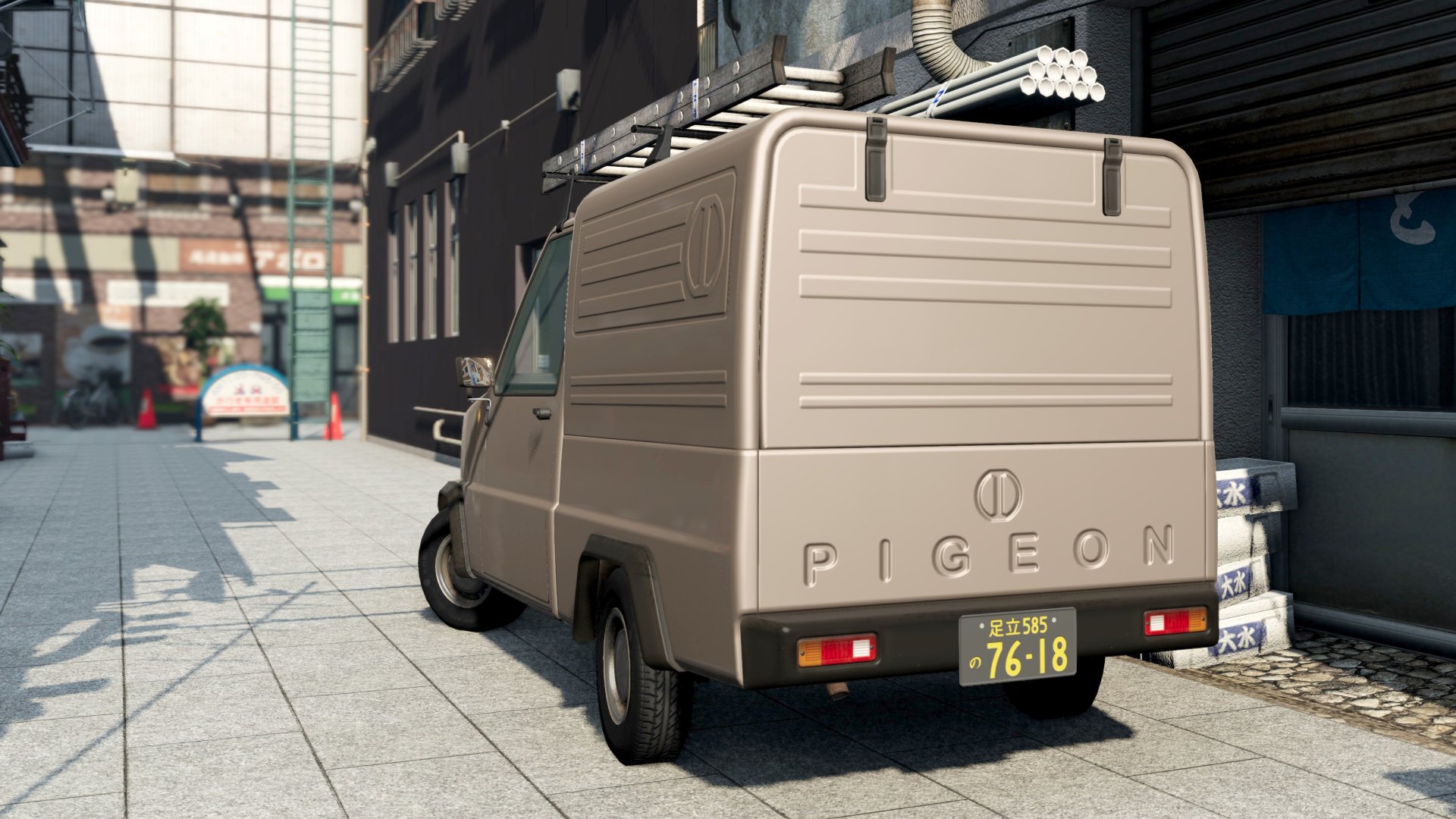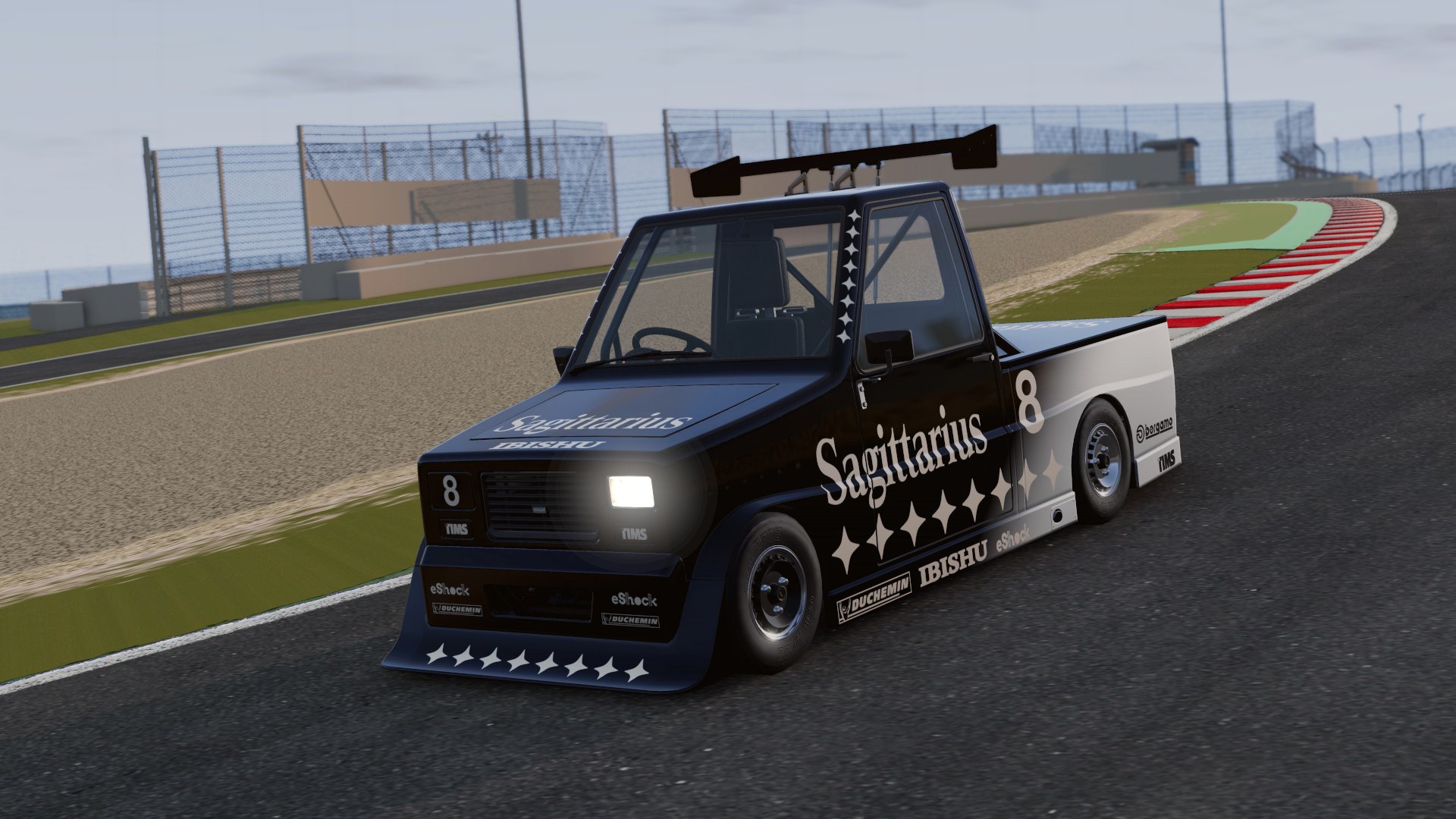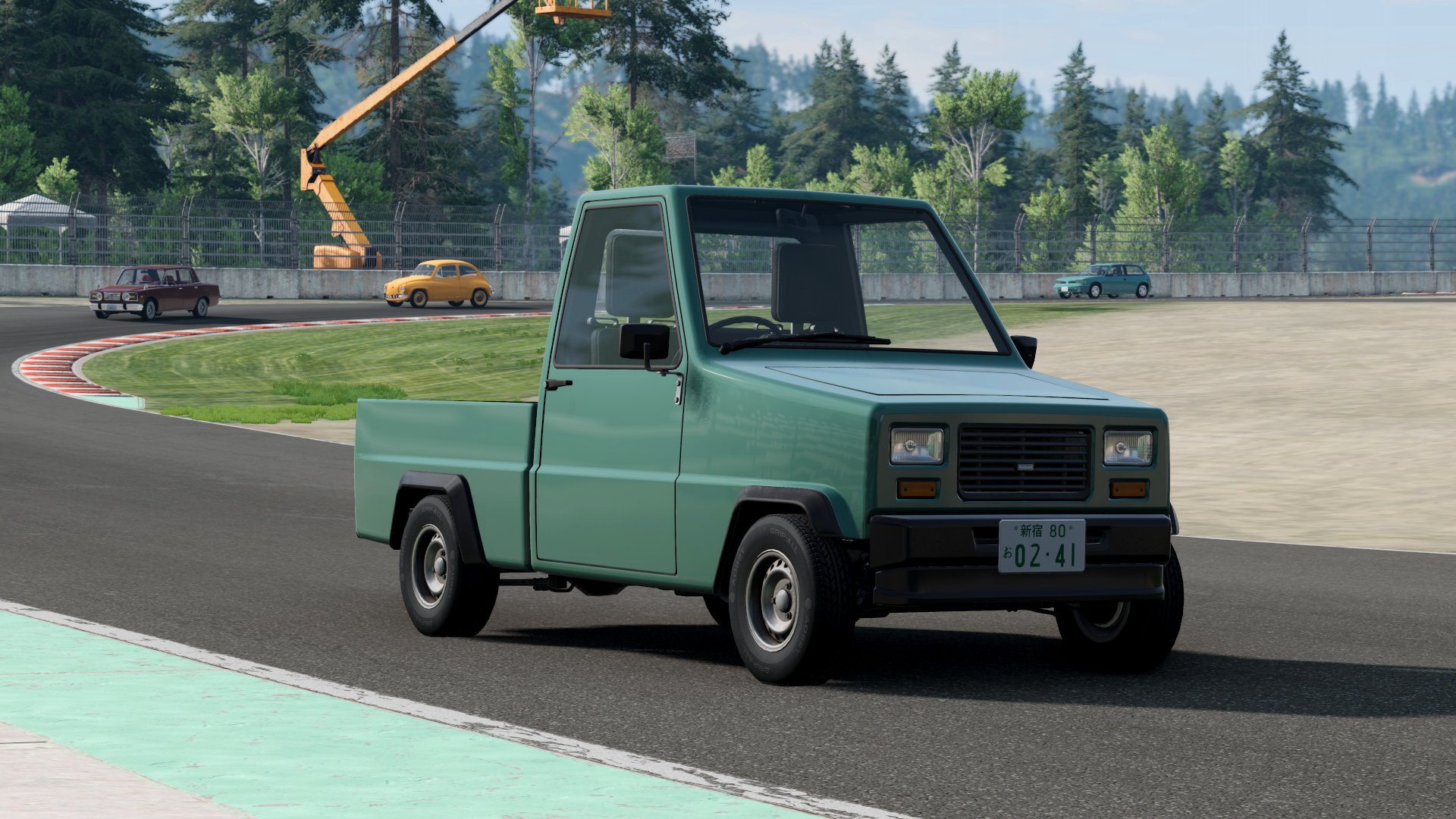Overview
Although I was satisfied by the aero package I'd created for BeamNG.drive's Civetta Scintilla, I wanted to apply a more toned-down but similar "track-ification" principle to a much lighter chassis, one with a lower power output offset by much greater agility.
The Ibishu Pigeon microtruck and its Wigeon microcar sibling struck me as the ideal candidates; each had a kei-sized engine snugly nestled under a fibreglass body in an FR drive layout. Ultimately, though, even though the Wigeon was clearly the more sporty of the two, the Pigeon was chosen instead due to having a longer wheelbase and simpler construction (i.e. no pop-up headlights or opening canopy) and essentially being a loose analogue to the Daihatsu Midget II as featured in the Gran Turismo games.
The original plan consisted only of a few motorcycle engine swaps, some aero, and paint schemes, but the rear solid axle wasn't tuneable enough for my liking, so rear double wishbone suspension was added, and with it, a modified body and electronic driving aids.
BeamNG mod repository link
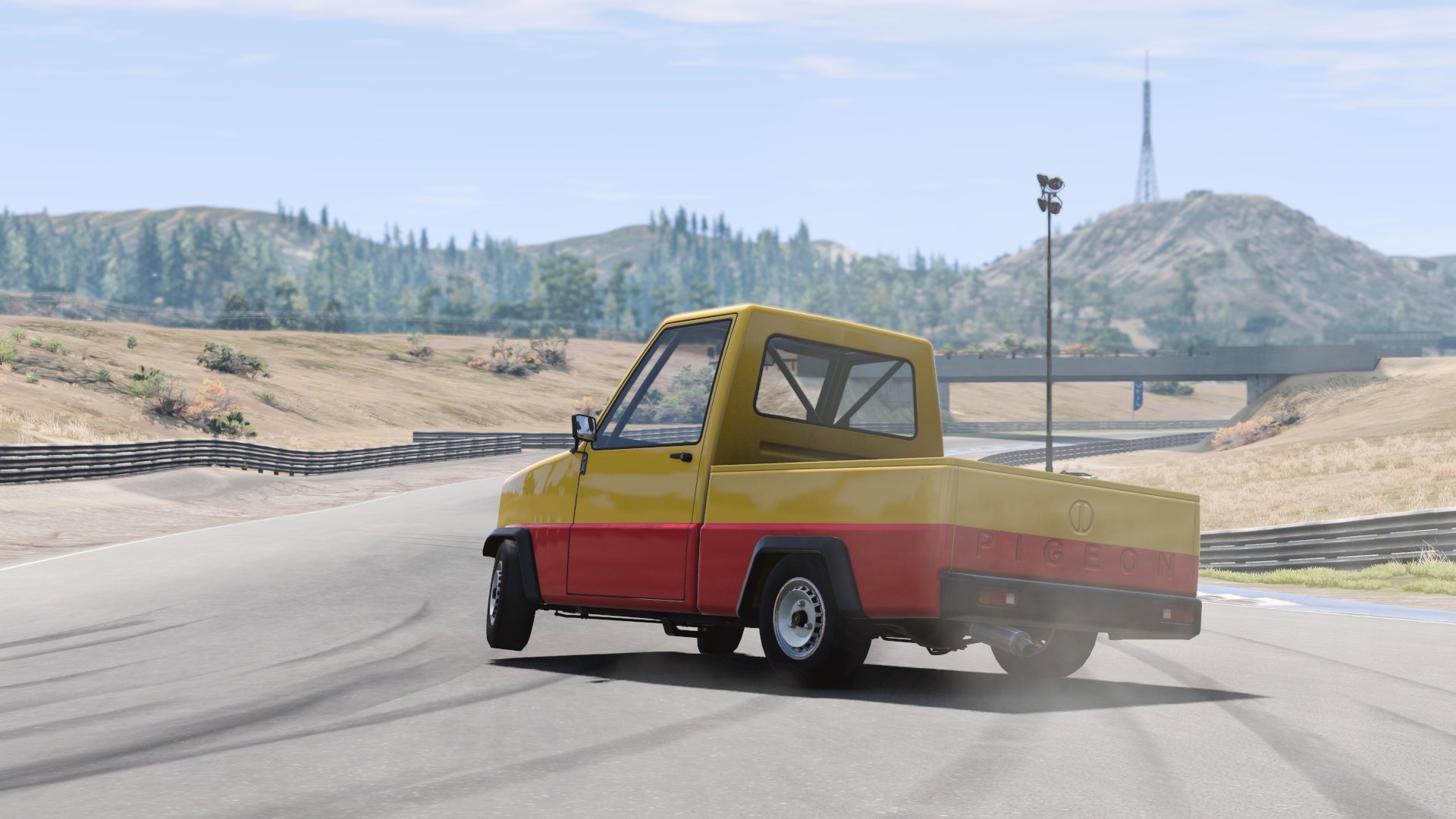
The vanilla racing configuration's lack of rear camber tends to result in lift-off oversteer (BeamNG.drive)
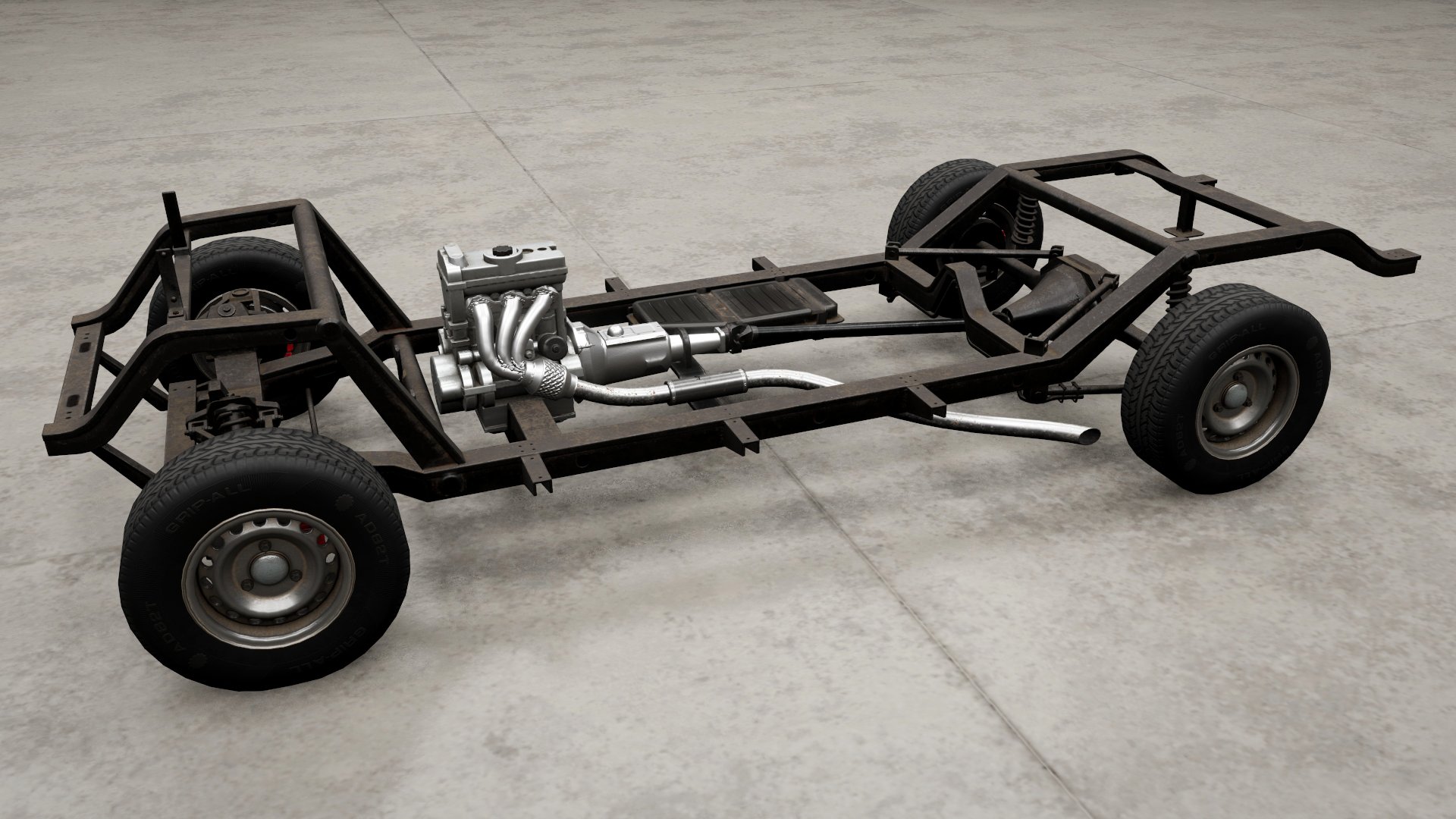
675 cc inline-3 with new gearbox and side-exit sport exhaust (BeamNG.drive)
Engines
The core component of the Pigeon 999 is a set of three motorcycle engine swap options: an MV Agusta-inspired 675 cc inline-3, a generic modern Japanese 999 cc inline-4 which serves as the namesake of the mod, and a 1299 cc inline-4 from the legendary Suzuki Hayabusa. To make shifting more responsive and forceful, each engine also has a sequential transmission option intended to approximate a quickshifter. While unsophisticated from a technical standpoint (as they use unmodified and lightly modified existing engine meshes, and their torque curves are from Automation), the power they produce can easily overwhelm the Pigeon's simple ladder chassis and solid rear axle.
Although all three motorcycle engines are compatible with the Pigeon's vanilla standard and sport exhaust, said exhausts don't complement the custom body kit particularly well, so a custom-modelled side-exit exhaust was added. It is available with or without a muffler, with the muffled variant being between the vanilla sport exhaust and the unmuffled side-exit exhaust in terms of loudness. A slightly altered version of the vanilla sport exhaust that doesn't clip through the independent rear suspension was also added.
In addition to the standard choice of long block, gearbox, radiator, oil pan, and ECU, a special "sound modification" slot was added to both I4s. It has no bearing on performance and allows players to substitute the standard engine sound for either a crossplane crank (as used in the Yamaha YZF-R1 since 2009), or a more "raw", harsh sound reminiscent of an aftermarket exhaust system.
Suspension
The rear double-wishbone suspension reuses meshes from the front suspension, but with minor tweaks to account for the presence of a differential and half shafts, the models and textures for both of which (as well as the 675 cc I3 engine) were adapted from the vanilla Hirochi Aurata SxS. Alterations were also made on the physics side, the most notable of which is the addition of leading links between the frame and rear hubs to mitigate "wheel hop" (when the wheels repeatedly lose and regain traction due to play in the hubs or axle, causing vibration when accelerating, braking, or skidding). Wider rear wheels were also added to account for the large step up in power.
Rear Steering
Mirroring the front suspension also meant mirroring the steering rack. The rear steering rack is non-functional by default, but since the physics framework for functional rear-wheel steering was already in place, I decided to put it to use for more utilitarian use cases. As the rear steering is not electronically controlled, handling can become very squirrelly at higher speeds, and because the leading links are absent from the steered variant of the rear suspension, it's not particularly well-suited for high levels of power, but performs just fine with the Pigeon's standard 550 cc engine.
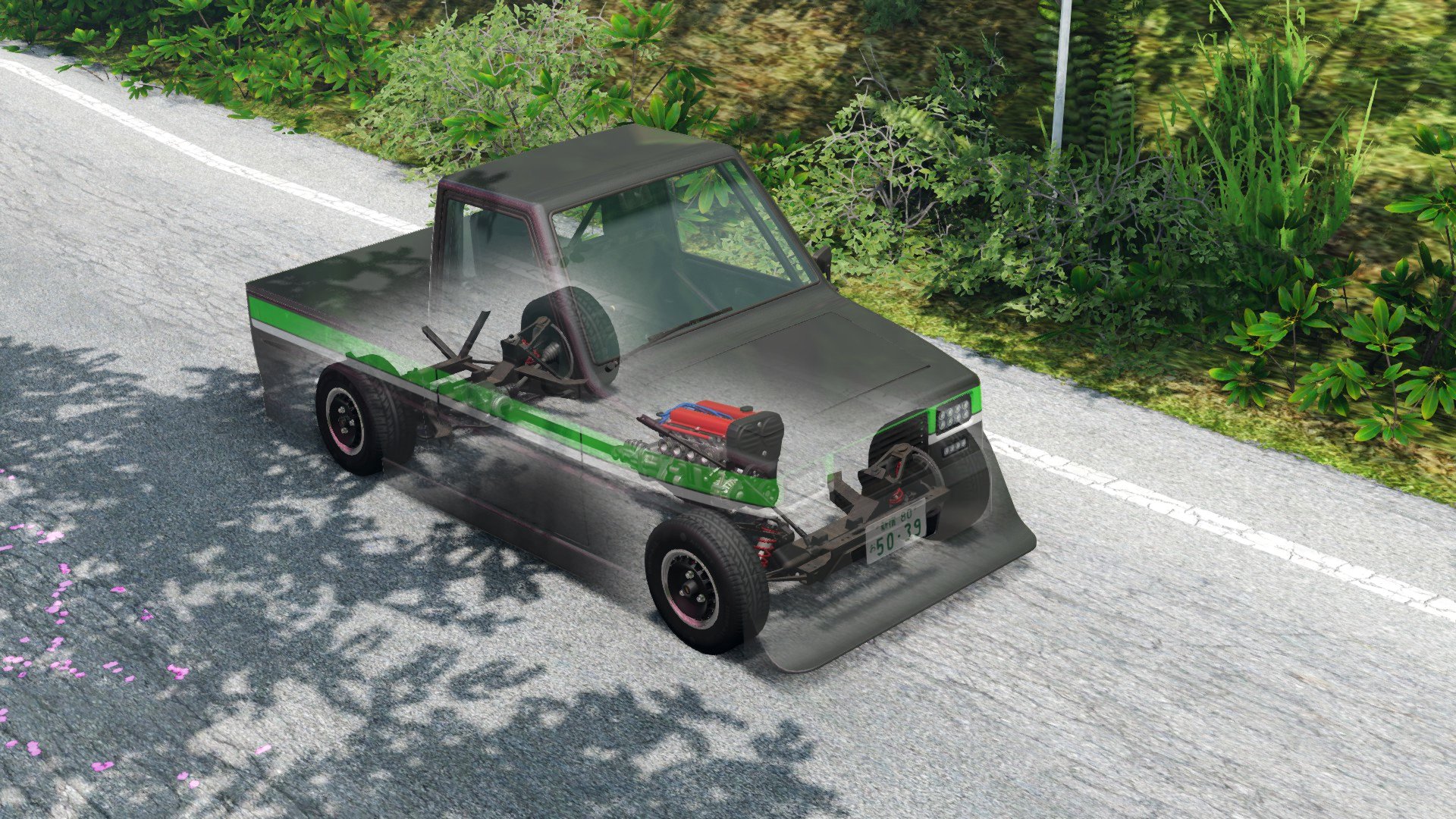
Front and rear suspension being tested on an uneven tōge road (BeamNG.drive)
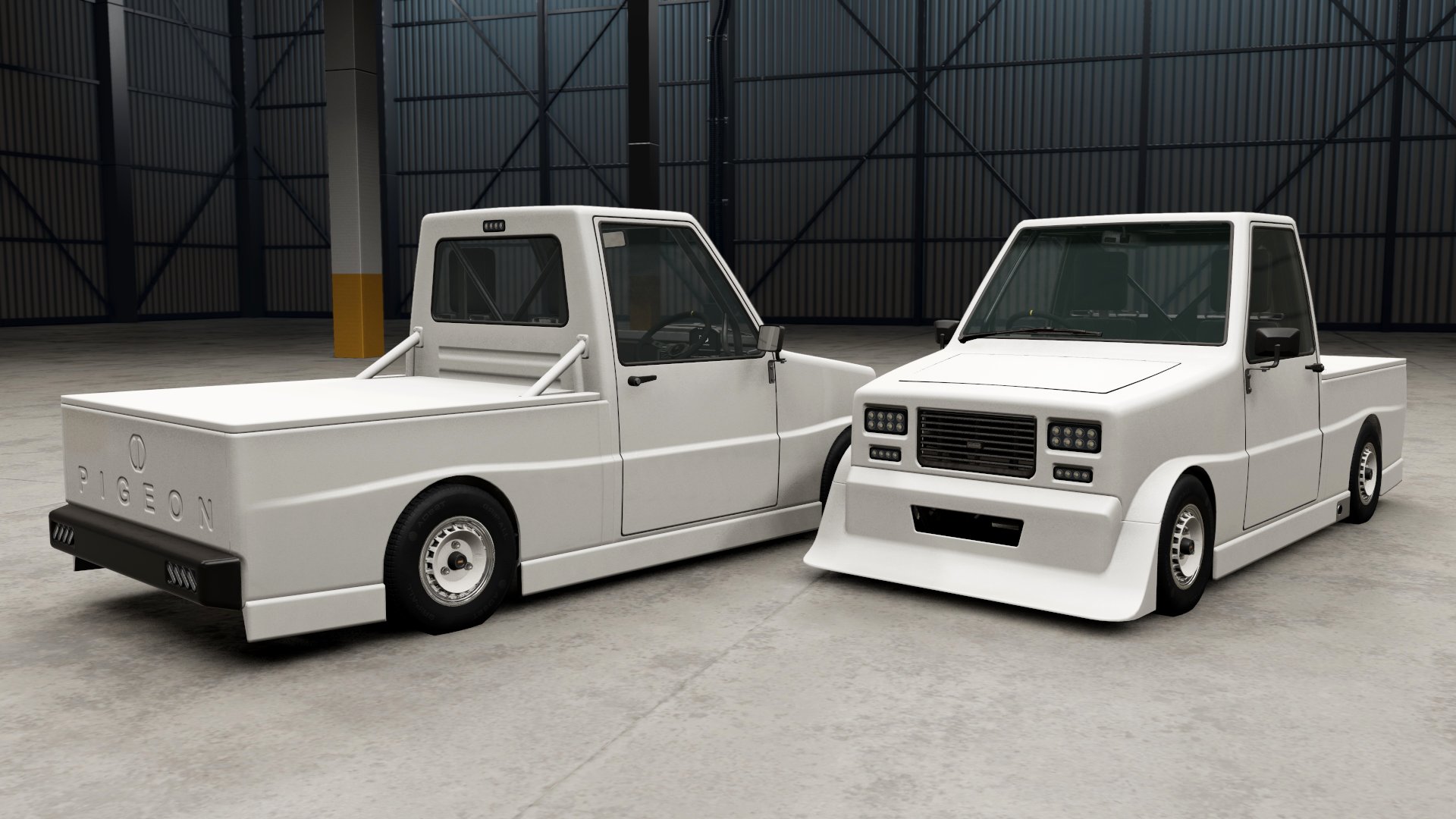
Custom body and lights; also note the digital dash, custom seats, and heat shield for the side-exit exhaust (BeamNG.drive)
Body
Canonically, the Ibishu Pigeon was produced from 1980 through 1989, so what better than to give it the same "Super Silhouette" treatment as other Japanese cars of the decade?
This Speedhunters article goes into detail about the Group 5-based race cars that graced Japan in the first half of the '80s, but to sum it up, the silhouette was the only thing they had in common with their road car counterparts; the chassis, suspension, powertrain, and especially lower body were otherwise a world apart.
Seeing as the Pigeon was already made of fibreglass and the underlying ladder chassis was rigid enough, I decided to dispense with a whole new frame and suspension. Of course, that didn't stop me from giving it the same planted posture and function-over-form aero (and bed braces, just to ensure the chassis didn't step out of line). A widebody, however, was not included since it would require widening the front and rear suspension track, and because I also wanted to preserve the Pigeon's narrow form factor.
The roof-mounted wing was chosen over a rear-mounted wing to help add downforce in a relatively balanced manner without having to resort to canards on the front, and because it seems less susceptible to the tall cabin's turbulent wake.
Lastly, new lights (using vanilla assets) and a tweaked interior were added, with options to remove the sun visors and centre console tray as well as install a vanilla digital dash display. The seats were also given proper headrests, shoulder harness loops, and more extensive padding overall.
Configurations
Included in the mod are a variety of configurations, from spicier takes on the vanilla racing config and a full-blown hillclimb machine to an all-wheel-steered workhorse and custom street models.
Motorsports
The "Race Stage 2" and "Race Stage 3" configs expand on the vanilla "Race" config, first with a more approachable mechanical grip setup and then with downforce. The Stage 3 in particular is meant to be a product of its time as opposed to a modern build, and drives similarly to the contemporaneous Civetta Bolide Group 5 race car.
The "Drift" and "Drag Stage 2" configs, however, are decidedly modern in nature, with nitrous pushing the latter's Hayabusa engine to around 450 hp (335 kW).
The "8 Hours" is an endurance racer with a livery familiar to fans of the Suzuka 8 Hours endurance race and Tourist Trophy (the game, not the event on the Isle of Man). Its asymmetrical single headlight setup, while unusual for a four-wheeled vehicle, reflects that of endurance bikes of the 20th and early 21st century.
The "Hillclimb" variant dispenses with headlights altogether and sports another iconic livery; just like the Race Stage 3 config, it has all the trappings of a silhouette car without actually being one.
Street
At the lower end of the spectrum, the "Plus Urban 4WS" is a prototype Pigeon Plus with all-wheel steering, envisioned as a boon for maneuverability in cramped urban environments.
In contrast to BeamNG's other street tuned configurations, the "Street Tuned 675" takes an understated "sleeper" approach, echoing the aforementioned Daihatsu Midget II with performance upgrades.
Each of the five configs prefixed "Custom" is a nod to a motorcycle manufacturer (namely the Japanese Big Four and MV Agusta), all with varying engine characteristics, recolourable paint schemes, and aesthetic touches. One of these configs takes after the first-gen Hayabusa, name and all—"Hayabusa" translates to "peregrine falcon", and "Hato", the name of the config, translates to "pigeon".
Itasha
Yeah, I might be a bit of a weeb.
Anyways, to round things off, my first attempt at an itasha build comes in the form of the "Black Kite", a Hayabusa-powered build with a full aero kit and a Bocchi the Rock!-themed livery. Said livery incorporates details such as colour accents corresponding to the characters, parody sponsors on the side skirts, and even the speaker grille pattern of a specific product-placed mini amp on the bed cover. The overall design was influenced by countless other real and fictional itasha liveries and wraps, which commonly feature characters superimposed over large text or abstract shapes along with the original work's official logotype and other ornamentation.
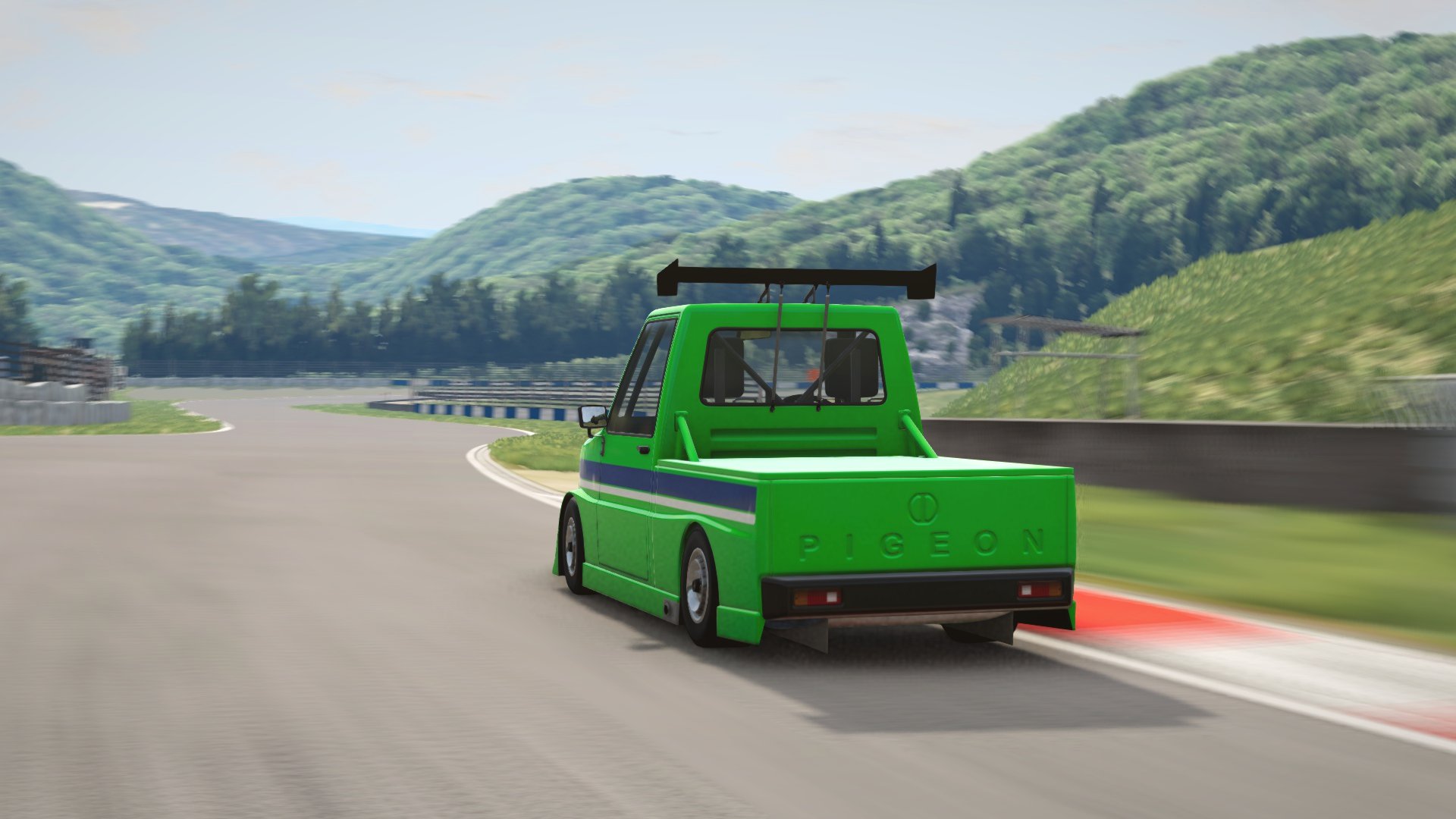
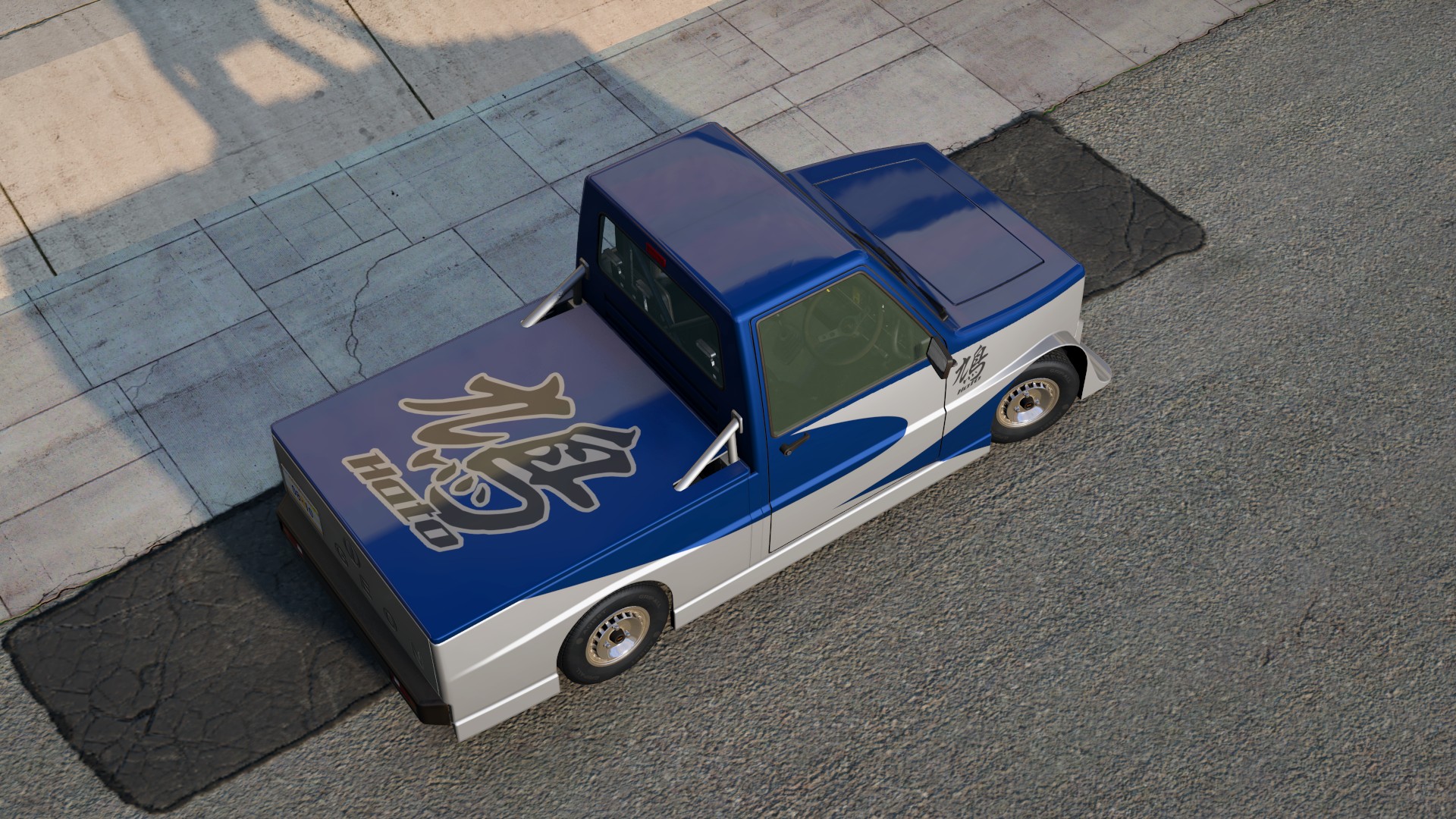
Left to right: "Race Stage 3" config, "Custom - Hato" config (BeamNG.drive)

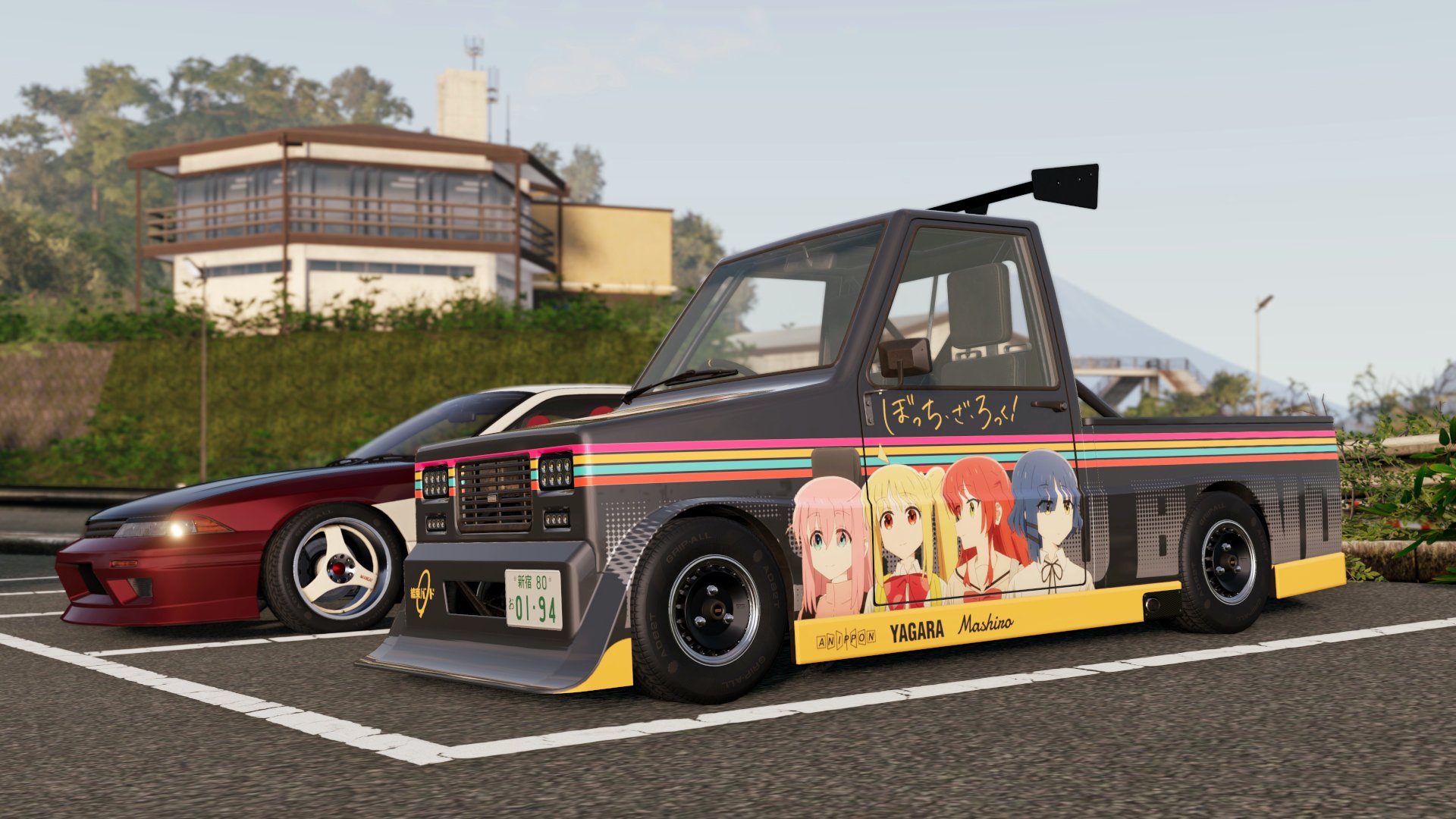
A typical itasha, with my design for comparison
Gallery
